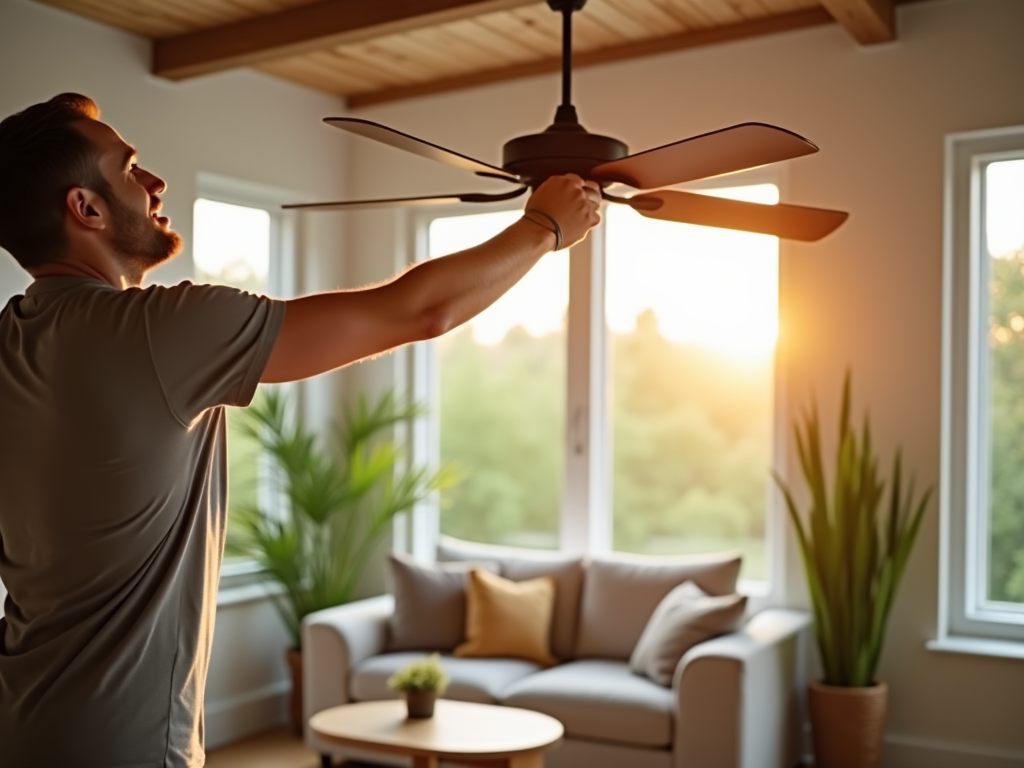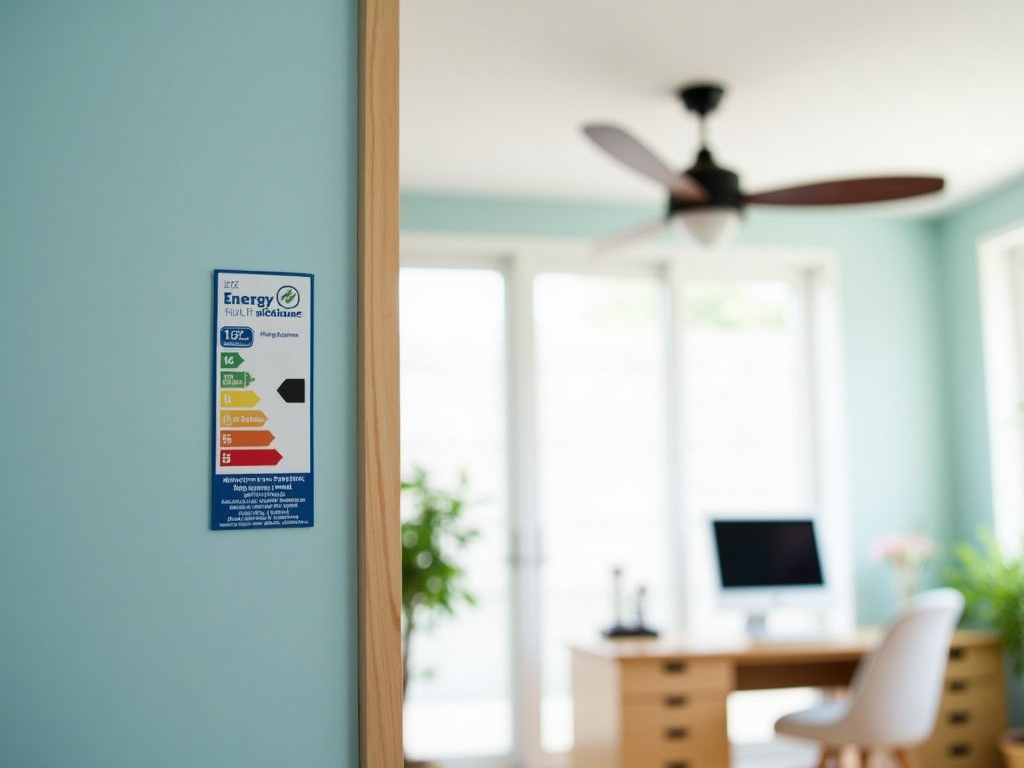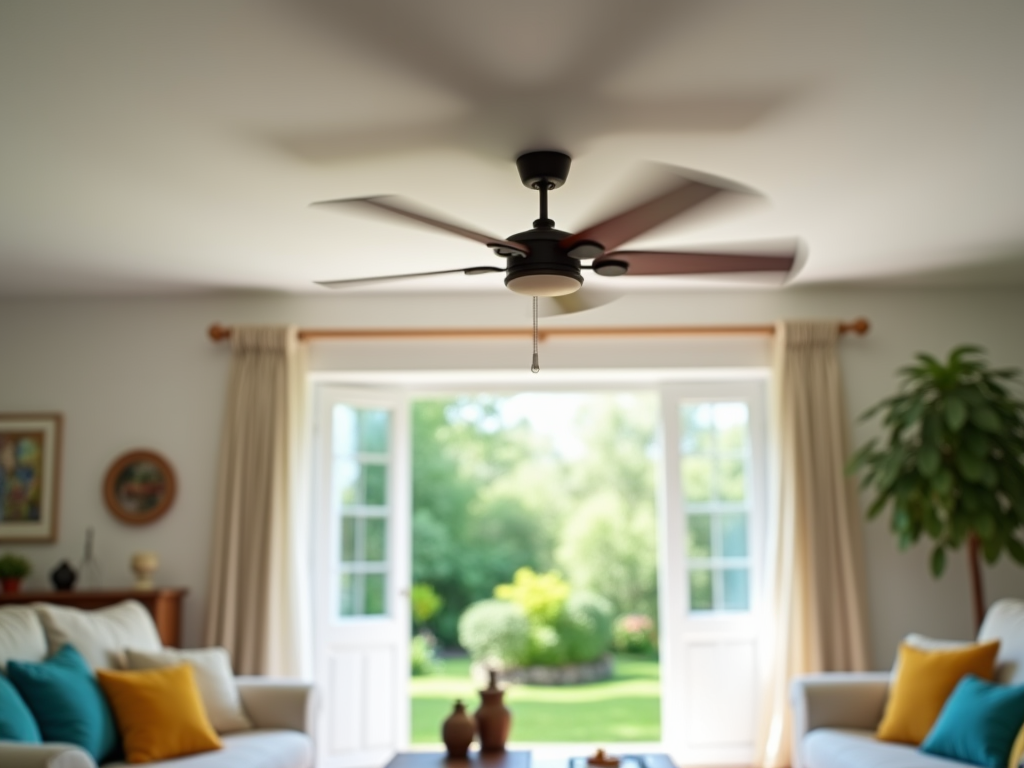Don’t Forget to Change Your Ceiling Fan Direction for the Summer!

As the temperature rises, it’s important not to overlook the role your ceiling fan plays in keeping your home comfortable. The main task at hand is adjusting the direction of your ceiling fan to ensure you’re staying cool efficiently. While many people focus on air conditioning, correctly setting your ceiling fan can make a noticeable difference in comfort and energy bills. In this article, we’ll explore why changing your ceiling fan’s direction is crucial for the summer and how it can optimize your home’s cooling system.
Why Change Your Ceiling Fan’s Direction?

Your ceiling fan isn’t just for decorative purposes; it serves a functional role in temperature regulation. During the summer, ceiling fans should be set to rotate counterclockwise. This setting pushes cool air down, creating a wind-chill effect that makes room occupants feel cooler. This effect can allow you to raise your thermostat by about four degrees without a loss of comfort. Switching directions can prolong the life of your air conditioning unit and reduce electricity consumption, benefiting both your wallet and the environment.
Understanding Ceiling Fan Settings

Ceiling fans come with multiple settings, and understanding these can help you make the most of their utility. Most fans have a small switch located on the motor housing that allows you to change the rotational direction. When you look up at the fan, blades rotating in a counterclockwise direction indicate the summer setting. At higher speeds, this setting creates a cooler environment, thus improving the efficiency of your cooling system. It’s essential to adjust these settings according to the season to maximize your fan’s benefits.
Changing the direction of your ceiling fan is a simple process that can have a big impact on your home’s comfort level. Here’s how to do it:
- Turn off the ceiling fan and wait for the blades to stop spinning completely.
- Locate the direction switch on the fan’s motor housing.
- Switch the direction to summer mode, rotating counterclockwise.
- Turn the fan back on and confirm the direction has changed.
- Set the fan to a higher speed to enjoy a refreshing breeze.
The Impact on Energy Efficiency
Adjusting your ceiling fan direction isn’t just for personal comfort; it also has a significant impact on energy consumption. By creating a wind-chill effect, you can rely less on your air conditioning system. Energy experts note that using ceiling fans correctly can save up to 15% on cooling costs. Therefore, it’s both financially and environmentally beneficial to ensure your fan is set properly. The reduced strain on your AC system also lowers the risk of repairs and maintenance, ultimately extending its lifespan.
Conclusion
Changing your ceiling fan’s direction for the summer is a simple yet effective way to enhance comfort and energy efficiency in your home. By setting your fan to rotate counterclockwise, you create a cooler environment that can help reduce reliance on air conditioning, leading to cost savings and a smaller carbon footprint. As an eco-conscious homeowner, this quick adjustment makes a significant difference during the hotter months. Don’t forget this small but crucial step as you prepare your home for the summer season.
Frequently Asked Questions
Q1: How often should I change my ceiling fan direction?
A1: You should change your ceiling fan direction twice a year, typically in spring and fall as you prepare for the summer and winter seasons.
Q2: Does the ceiling fan speed matter in terms of effectiveness?
A2: Yes, higher speeds enhance the wind-chill effect, making you feel cooler and allowing you to compensate with a higher air conditioning temperature setting.
Q3: Can ceiling fans replace air conditioning?
A3: Ceiling fans can complement an AC system by circulating cool air more efficiently, but they cannot lower air temperature. They are best used to enhance AC efficiency, not replace it.
Q4: Is it okay to leave the ceiling fan on all the time?
A4: It’s best to turn off ceiling fans when a room is unoccupied to save energy, as they only cool people, not the air itself.
Q5: How do I know if my fan is rotating in the correct direction?
A5: In summer, the fan blades should move counterclockwise when you look up at them. This setting ensures the fan pushes air down, making you feel cooler.


